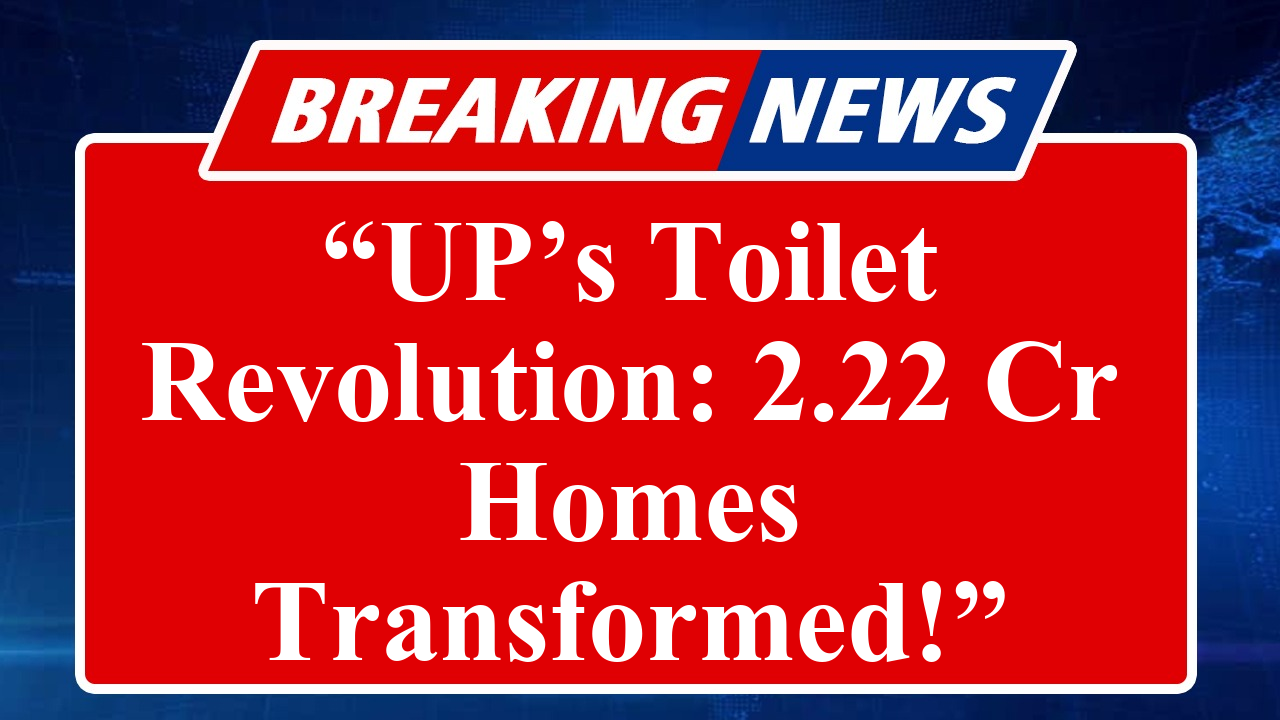“Uttar Pradesh advances Swachh Bharat Mission with over 2.22 crore rural toilets built since 2014, aiming for 100% sanitation coverage. Despite progress, challenges like declining usage and construction quality persist, prompting innovative solutions for sustainable sanitation.”
Uttar Pradesh Leads Swachh Bharat’s Rural Toilet Revolution
Under the Swachh Bharat Mission (SBM), launched in 2014 by Prime Minister Narendra Modi, Uttar Pradesh has made significant strides in improving rural sanitation. The state has constructed over 2.22 crore individual household latrines (IHHLs), contributing to the national tally of 10.9 crore rural toilets by 2020. This effort has transformed rural landscapes, with 95.2% of rural households in UP now having access to toilets, a sharp rise from 43.8% in 2014-15, according to the National Annual Rural Sanitation Survey (NARSS) 2019-20.
The mission’s focus on eliminating open defecation has yielded tangible results. By 2019, over 6 lakh villages nationwide, including many in UP, were declared Open Defecation Free (ODF). In UP, districts like Varanasi and Gonda have seen accelerated toilet construction, with Varanasi achieving 100% household toilet coverage by 2018. The state’s “Mission 32” in Gonda, which built 32,000 toilets in 120 hours in 2018, exemplifies the aggressive push for sanitation infrastructure. These efforts align with Sustainable Development Goal (SDG) 6.2, aiming for universal sanitation access.
Health and economic benefits have followed. The World Health Organization reported 300,000 fewer diarrheal deaths in 2019 compared to 2014, with families in ODF villages saving an average of INR 50,000 annually on healthcare costs. In UP, 93% of women in ODF areas reported feeling safer at home due to improved sanitation facilities. Additionally, reduced groundwater contamination in these areas underscores the environmental impact of the mission.
However, challenges remain. A 2023 World Bank paper highlighted a decline in rural toilet usage in UP since 2018, particularly among Scheduled Caste (20 percentage point drop) and Scheduled Tribe (24 percentage point drop) communities. The report noted that while toilet access increased from 38% in 2012 to 90% in 2019-20, usage has not kept pace, with only 65% of rural households using improved toilets by 2021. Factors like poor construction quality, lack of water availability, and inadequate awareness campaigns contribute to this gap. Only 26% of rural toilets in UP use twin-leach pits, a sustainable design for waste management, according to surveys.
To address these issues, SBM Phase II, launched post-2019, focuses on sustaining ODF status and introducing comprehensive solid and liquid waste management. With an investment of Rs. 1.40 lakh crore, UP is integrating schemes like Jal Jeevan Mission to ensure water supply for toilets, crucial for sustained usage. Initiatives like the FINISH Program, which marked its two-millionth toilet in Gorakhpur in 2024, provide sanitation loans to rural beneficiaries, promoting twin-pit toilets that convert waste into manure.
The UP Toilet List 2025, released online by the central government, allows rural residents to check their eligibility for free toilet construction under SBM. This digital platform streamlines access, enabling households to apply for subsidies and track progress. However, barriers persist, particularly for Below Poverty Line (BPL) households. The reimbursement model, offering Rs. 12,000-15,000 post-construction, requires initial funds that many rural families struggle to raise. The average cost of building a toilet often exceeds Rs. 20,000, a significant burden given the average rural household income of Rs. 8,931 per month, as per Nabard’s 2016-17 survey.
Innovative solutions are emerging. Public-private partnerships, like those in urban areas, are being explored for rural UP to build aspirational toilets with modern amenities. Community-driven efforts, supported by NGOs and self-help groups, are also promoting behavioral change. The Swachh Survekshan Grameen 2025 survey is expected to provide updated data on toilet usage and ODF sustainability, guiding future interventions.
Despite setbacks, UP’s progress under SBM reflects a transformative push toward rural sanitation. The state’s focus on infrastructure, coupled with efforts to address usage gaps, positions it as a leader in India’s sanitation revolution. Continued investment in awareness, quality construction, and water supply will be critical to achieving ‘Sampoorn Swachhata’ (complete cleanliness) in rural UP.
Disclaimer: This article is based on recent reports, government data, and studies from sources like the World Bank, Ministry of Drinking Water and Sanitation, and news outlets such as The Hindu, Hindustan Times, and Swachh Bharat Mission websites. Data accuracy depends on the reliability of these sources.

